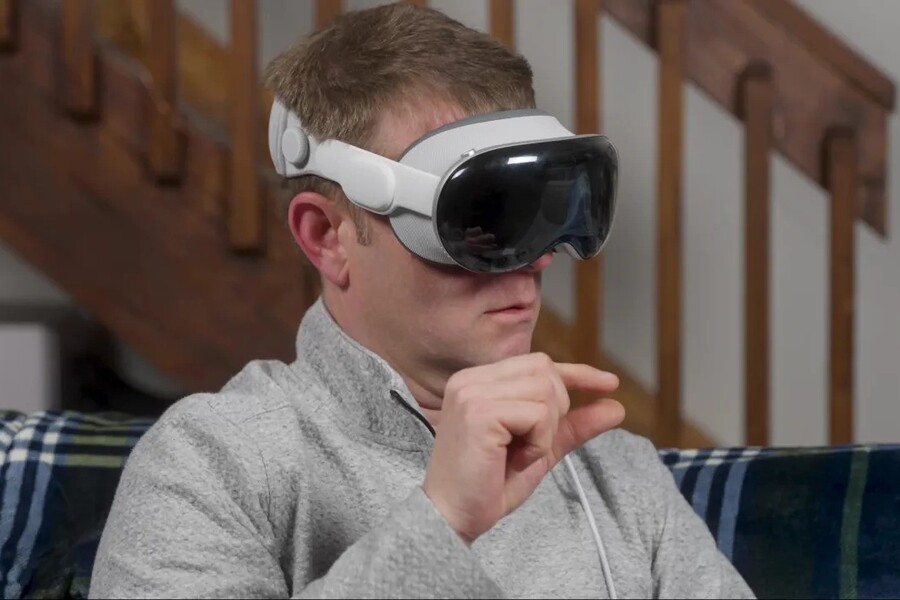Apple appears to be accelerating plans to introduce a lower-cost version of its Vision Pro headset, aiming for a launch as soon as late 2025 — potentially alongside the iPhone 17 series — as it works to strengthen its position in the XR (Extended Reality) market.
Launched earlier this year, the Vision Pro, with its $3,500 price tag, was heralded as one of the most advanced XR headsets ever produced. However, despite its technical prowess, it fell short of becoming the blockbuster success Apple had hoped for. High pricing, combined with the absence of a dedicated app ecosystem and lingering ergonomic issues, contributed to muted enthusiasm from consumers and critics alike.
Rather than retreating, Apple is pushing forward aggressively. According to a Bloomberg report, the company is now developing a more affordable, streamlined version of the Vision Pro — a move seen as crucial in making mixed reality experiences accessible to a broader audience. Analysts had previously projected that such a device could take years to materialize, but intensified competition in the XR sector seems to have prompted Apple to expedite its roadmap.
A New Vision Model in the Works
All signs currently suggest that Apple’s lighter, cheaper Vision model could arrive between the end of 2025 and the first half of 2026. Internal references to a product known as “Vision One” have fueled speculation that the tech giant will continue expanding its XR product family instead of focusing solely on high-end devices.
A major question remains: Will the lower-cost Vision headset replace the Vision Pro or complement it? Bloomberg’s reporting indicates that Apple is internally debating this strategic choice. This uncertainty is complicated further by Apple’s development of a next-generation flagship headset that would operate in a tethered mode — connecting to a Mac for enhanced processing power, reduced latency, and improved battery life.
In essence, Apple seems to be pursuing a dual strategy: offering a premium, professional-grade device (the successor to Vision Pro) and a more accessible consumer model at a significantly lower price point.
Expected Features and Pricing
Although full technical specifications for the budget-friendly Vision model are not finalized, early leaks suggest that Apple plans to cut costs through a few key modifications:
- Processor: The device could feature the upcoming M5 chip, the same next-generation silicon expected to power future Mac and iPad Pro devices.
- Display: To lower manufacturing costs, Apple may use a lower-resolution display panel compared to the Vision Pro’s ultra-premium micro-OLED screens.
- Weight and Design: Significantly lighter than the Vision Pro, the new model could weigh under a pound, addressing one of the primary criticisms of the original device — its uncomfortable, bulky design.
- Price Range: Estimates place the retail price between $1,500 and $2,500, making it dramatically more affordable than the Vision Pro’s $3,500 price point.
While specifics about design changes remain under wraps, ergonomic improvements are expected to play a central role. Early Vision Pro users consistently cited discomfort during extended use, an area Apple is reportedly prioritizing for the new device.
Why It Matters
The development of a more affordable Vision headset represents a critical pivot for Apple. While the Vision Pro showcased groundbreaking XR technology, its limited adoption highlighted that even Apple’s loyal fan base is sensitive to pricing and practical utility, especially for emerging tech products.
By introducing a lower-priced alternative, Apple aims to expand its XR footprint beyond early adopters and professional users to mainstream consumers — a vital step if it wants to avoid falling behind rivals like Meta, Sony, and potentially Samsung in the next phase of spatial computing.
Moreover, the move underscores Apple’s broader strategy of democratizing access to new technologies by initially launching premium versions before offering more accessible models, a playbook it has successfully used in products like the iPhone, iPad, and Apple Watch.
What’s Next?
Apple has an opportunity — and a challenge — ahead. The upcoming device needs to balance affordability, performance, and user experience without compromising the premium standards Apple is known for. If the company can successfully address criticisms around comfort, ecosystem support, and battery efficiency, the lower-cost Vision headset could rejuvenate excitement around spatial computing.
Details about the exact launch event remain uncertain, but if reports hold true, Apple may unveil the new headset as early as late 2025, possibly during its annual fall event alongside the iPhone 17 lineup. Alternatively, it could target the first half of 2026, ensuring enough lead time to polish the device and develop accompanying software features.
Regardless of timing, the stakes are high. Apple’s ability to redefine the XR landscape — not just for high-end enthusiasts but for everyday users — may very well hinge on the success of this next Vision model.

